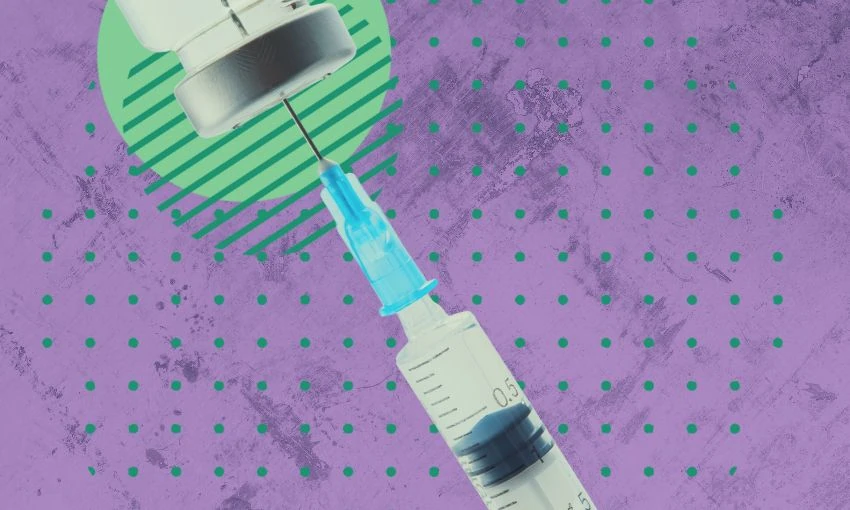Copyright thespinoff

With cases continuing to rise and immunisation coverage ‘way too low’, here’s what you need to know. With thousands of close contacts identified and two schools linked to cases, Health NZ is urging New Zealanders to get immunised in order to curb a measles outbreak spreading across the motu. Nick Chamberlain, director of the National Public Health Service, said the nation’s health system had been preparing for a high-risk measles outbreak for several years, and was now focused on “stamping out” the virus. “The risk of measles remains really, very high,” Chamberlain said in a briefing yesterday. “Immunisation coverage is now the highest it’s been in many years, but it’s still way too low.” Here are some of the key figures that tell the story of the outbreak. The number of current confirmed measles cases nationwide, as of Thursday afternoon. Cases are currently rising at one new case each day, and Health NZ has plans in place to handle up to 100 new cases a week. The number of current close-contact locations of interest, across Wellington, Taranaki, Manawatū-Whanganui and Nelson-Marlborough and Tasman. Wellington College and Wellington Girls’ College are both locations of interest, while a Bluebridge ferry headed from Picton to Wellington on October 3 has been linked to several cases. One case is connected to overseas travel, and a new case reported on Thursday has yet to be linked to any current cases. Health NZ’s website contains full details of exposure locations, dates and times. The total number of measles cases identified two weeks ago in Northland, which Health NZ hasn’t counted as part of the current outbreak as it was originally believed the two were unlinked. Despite now having found a link between these cases, “because it’s a bit confusing to suddenly change numbers halfway through, we’re still calling this a separate outbreak”, said Chamberlain. The number of current close contacts identified by Health NZ. The likelihood of contracting measles if you’re in the same room as a case and are non-immune (unvaccinated or without prior exposure). The number of New Zealanders who contracted measles in the last outbreak in 2019. The number of cases in the 2019 outbreak who needed hospitalisation to treat complications, which makes up about 35% of total cases – a quarter of those hospitalised were under the age of two. The number of unborn babies that died in the 2019 outbreak. The number of measles cases recorded in 2019 in Samoa after the virus spread from New Zealand, leading the country to close its borders that December. The number of deaths caused by Samoa’s measles outbreak. Most were children under five. The percentage of the population that needs to be vaccinated against measles to achieve immunity and prevent community outbreak. The percentage of New Zealand children who turned two in the three-month period up to June 2025 and are fully immunised (the most recent data). The percentage of Pasifika two-year-olds fully immunised according to the latest data. The percentage of Māori two-year-olds fully immunised according to the latest data. Chamberlain told The Spinoff that Health NZ is actively working with Māori and Pasifika-led providers to find opportunities to boost immunisation. The number of days before and after a rash appears when measles is most contagious. The age at which babies are old enough to receive their first dose of the measles vaccine, before the second dose is given at 15 months – you only need two doses to be fully immunised. During an outbreak, it is sometimes recommended that babies receive their first dose younger, although Health NZ says the threshold hasn’t yet been reached for this to happen. New Zealanders born in this year or earlier are likely to already be immune to measles, as vaccines were not yet available and most people were infected during childhood. “If you’re in doubt or don’t believe you’ve had measles, then getting a MMR vaccine is still very safe,” director of public health Corina Gray said. You can also get a blood test to check your immunity, though there will likely be a cost for this. There is information on how to find evidence of your immunity here. The year a national immunisation register was introduced. New Zealanders born in this year or later should have their immunisation status available on an electronic record, which their GP can access – they don’t need to pay for a blood test to check if they are vaccinated. The estimated percentage of Aotearoa’s population born in the 80s and 90s that is fully immunised. The number of contact tracing staff in national and local roles, with more being trained by Health NZ. “We’re still not at capacity, certainly in the Wellington region where we’re pretty pressed, because that’s where a large majority of those close contacts,” Chamberlain said. The number of people in New Zealand who receive a measles vaccine in an average week. The increase in measles immunisations undertaken in the last week in light of the outbreak. The number of months’ worth of vaccine stock Health NZ currently has, and “we’re ordering more all the time”, said Chamberlain. The amount under 18s – as well as over 18s eligible for free healthcare in New Zealand – need to pay for a measles vaccine.



